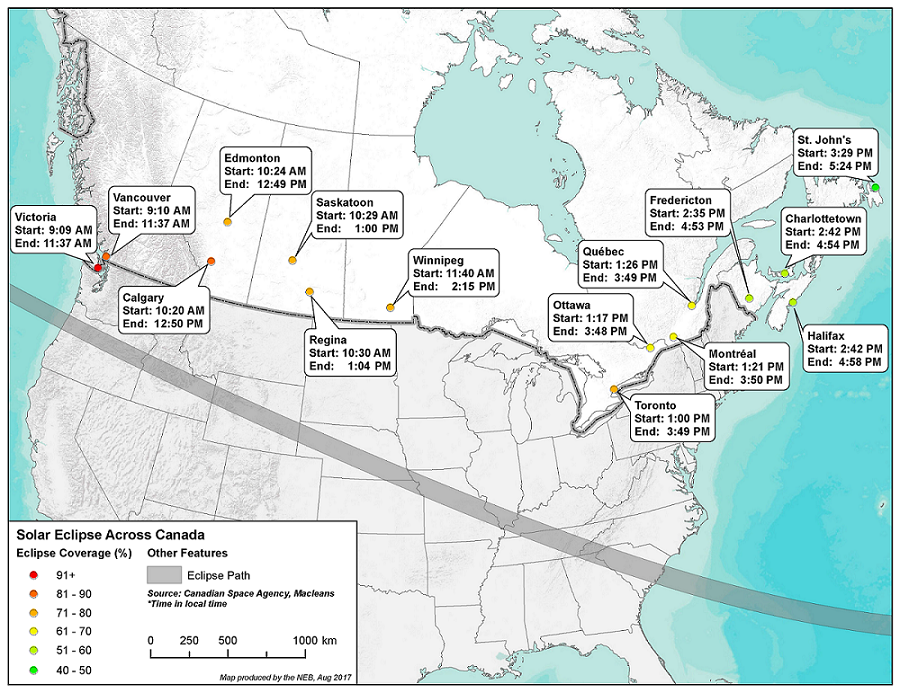Market Snapshot: Impacts of a solar eclipse on solar generation
Release date: 2017-08-21
A solar eclipse occurs when the moon moves between the Earth and the sun, casting a shadow on the Earth. This can have a large impact on solar power generation. During the 20 March 2015 solar eclipse, European electricity grids rapidly lost 17 000 megawatts (MW) of solar generation in the early morning, then quickly regained 25 000 MW later near noon.
On 21 August 2017, a solar eclipse will pass over parts of Canada and the continental United States (U.S.). Canadians will experience a partial eclipse, with greater coverage of the sun occurring in the western provinces. There will be a full eclipse in certain U.S. states and a partial eclipse in others. The impact of this eclipse on North American power grids is expected to be limited to due to relatively low reliance on solar power in most jurisdictions and the ability to balance the grid with other forms of generation.
Visibility of the 21 August 2017 Solar Eclipse in Canada
Source and Description
Source: NEB
Description: This partial map of North America shows the west to east trajectory of the 21 August 2017 solar eclipse. A grey line going through the U.S. shows the path of the full eclipse. The Canadian portion of map shows when, and to what degree, the partial solar eclipse will be visible in major Canadian cities. Coverage of the sun during the eclipse decreases from west to east, from a high of 91% in Victoria to a low of 43% in St. John's.
In 2016, the U.S. had an estimated solar generation capacity of 56 221 MW, with California having the most installed solar capacity of any U.S. state. The California Independent System Operator (ISO) estimates that solar generation accounts for as much as 30-40% of ISO load, and that it will need to dispatch about 6 000 MW of hydro power during the 21 August 2017 solar eclipse to balance the grid.
In 2015, Canada had over 2 100 MW of installed solar capacity, with over 98% located in Ontario. The 21 August 2017 solar eclipse is expected to reduce Ontario solar production by 70 to 75%, similar to a cloudy day. Because solar accounts for 2% of total Ontario power generation, no significant grid impacts are expected.
- Date modified:

